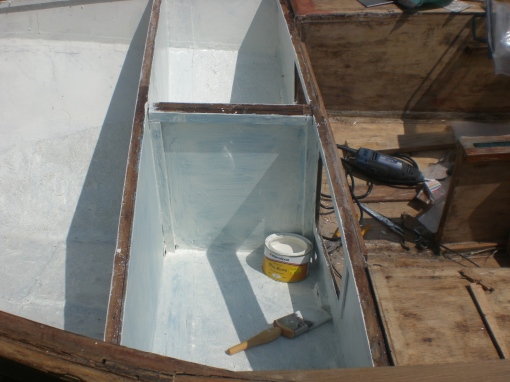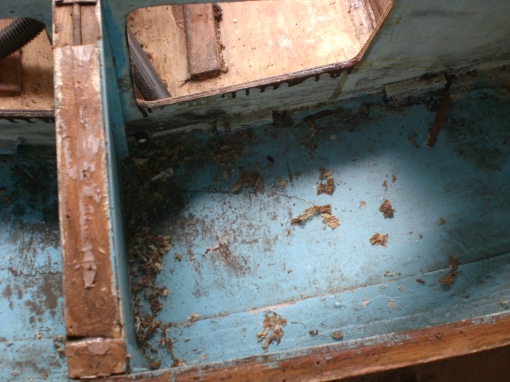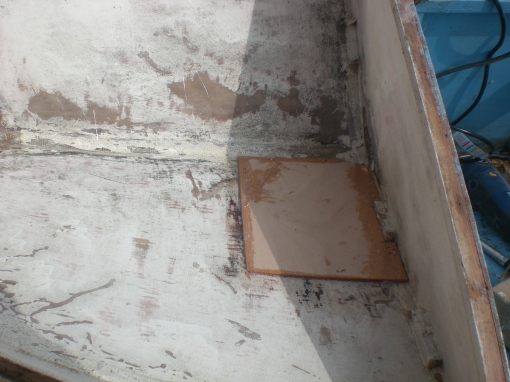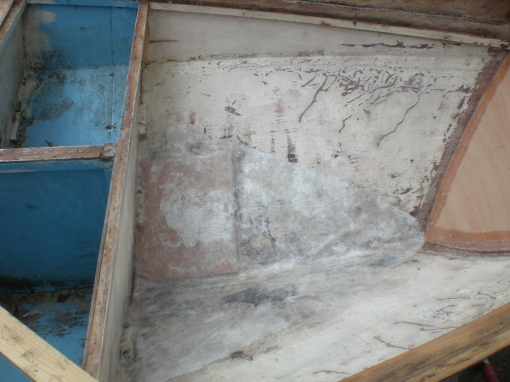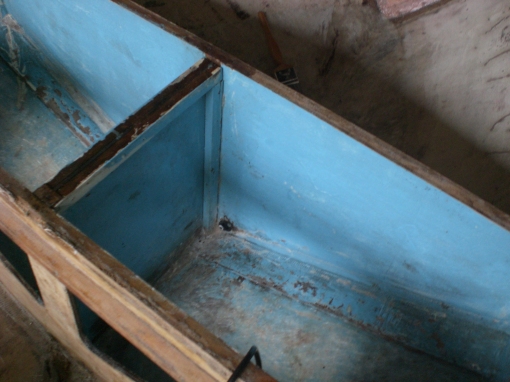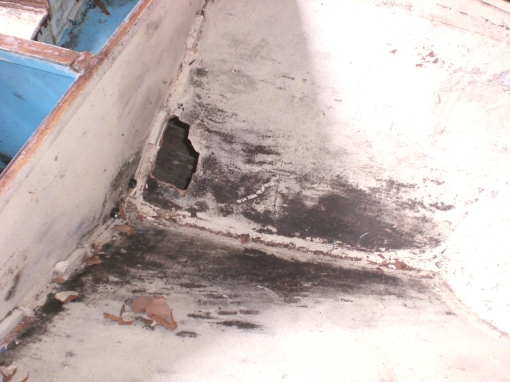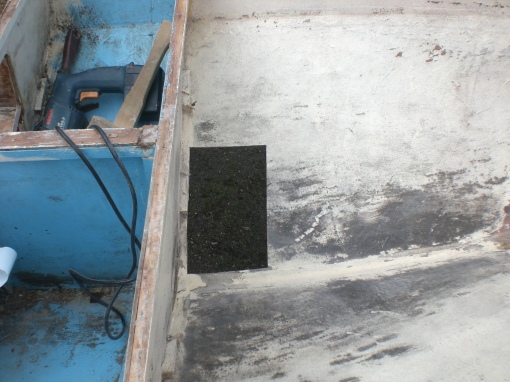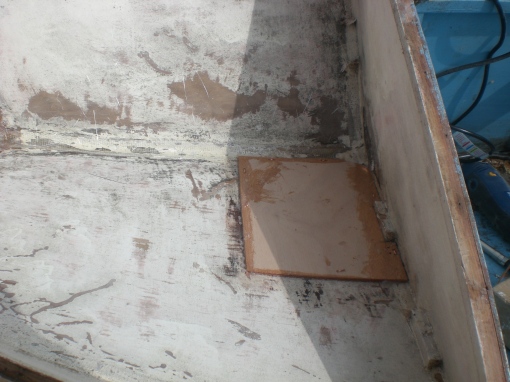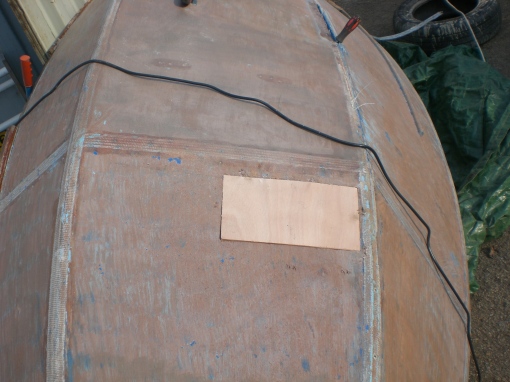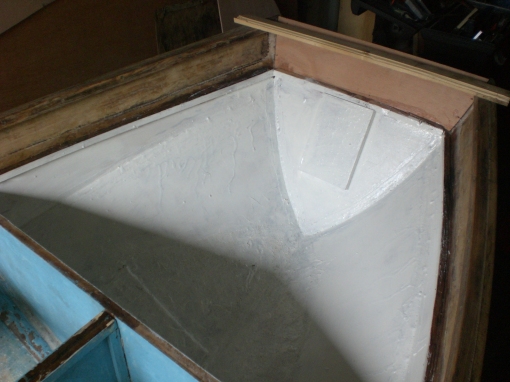
inside bow locker finished
As promised some more pictures of the bow locker repairs. please note that the runs in this picture are from the origonal work not mine!! You can see the stringer that will support the fore deck and into which I will screw fix the deck. I gave the stringer a liberal coat of west system resin before fitting the deck to act as a glue.
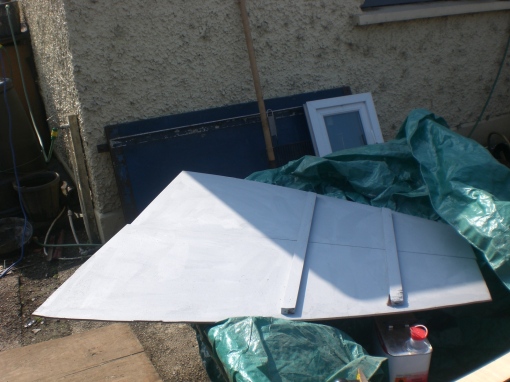
underside of bow deck
the supports under the fore decks were the originals re used
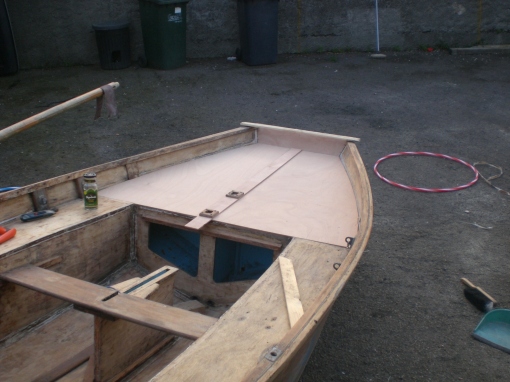
fore deck fitted prior to fixing
I fixed the deck with stainless steel screws aw 150mm centres to the stringer . These screws will be hidden with the fibreglass tape.
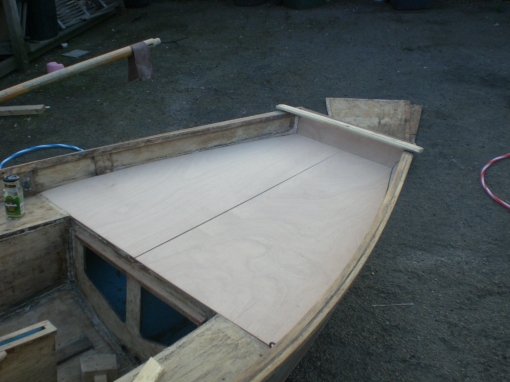

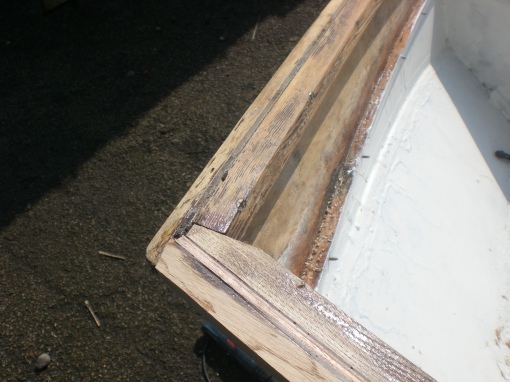
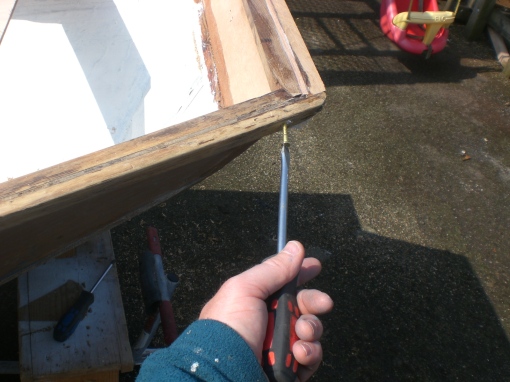
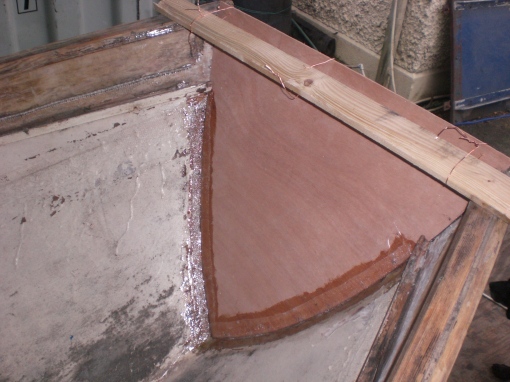
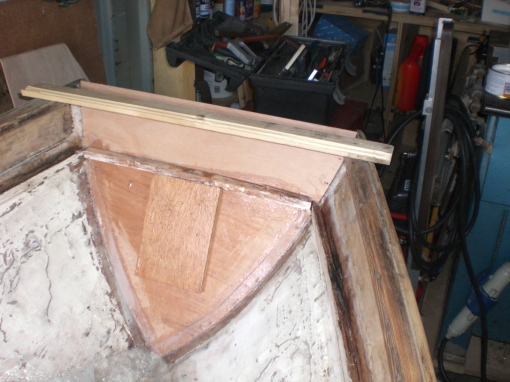 I re used all of the forward deck support timbers , simply to save on the effort of copying them. These were screwed and glued into place prior to painting the inner lockers.
I re used all of the forward deck support timbers , simply to save on the effort of copying them. These were screwed and glued into place prior to painting the inner lockers.